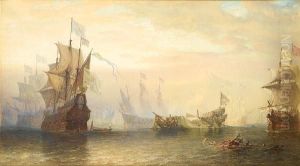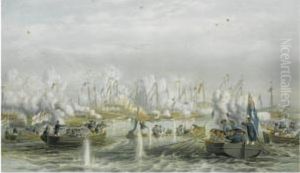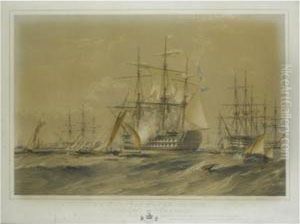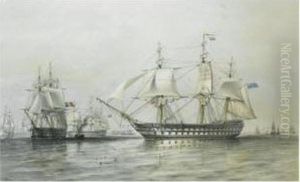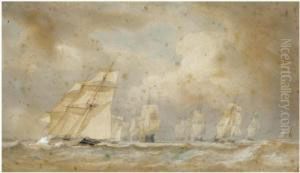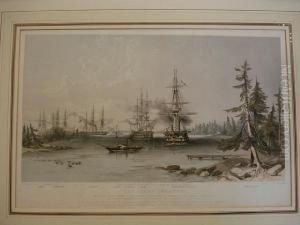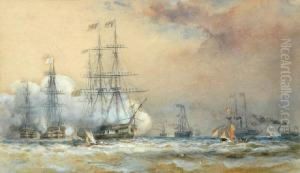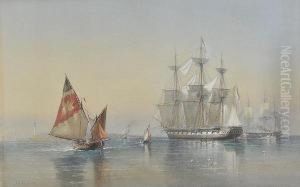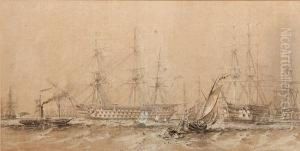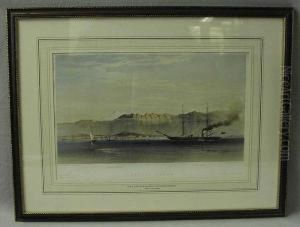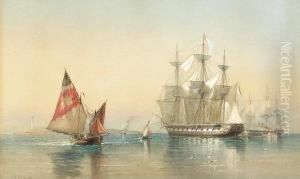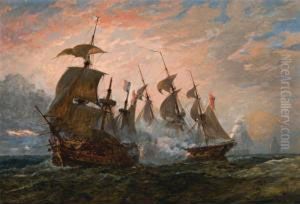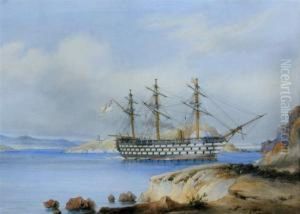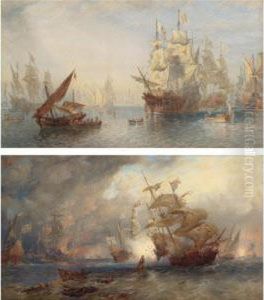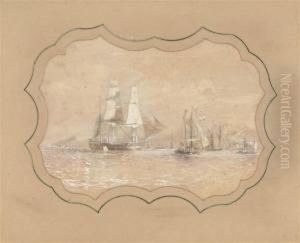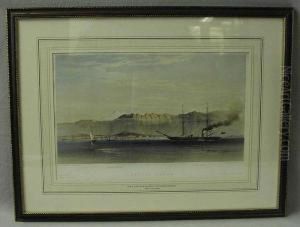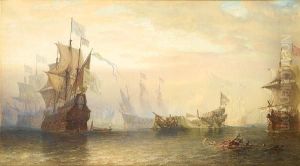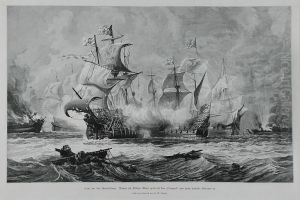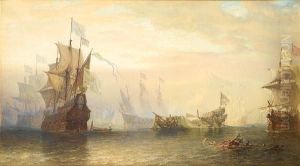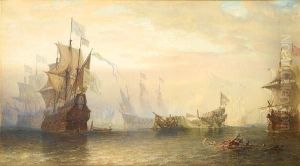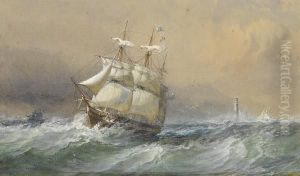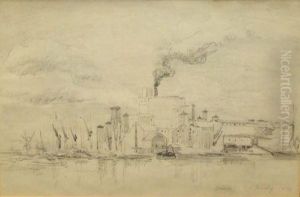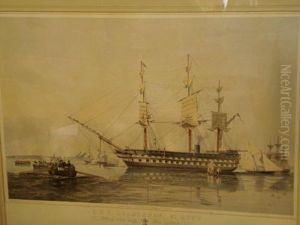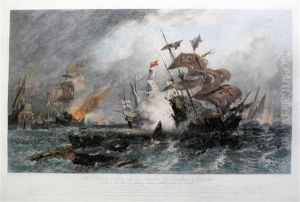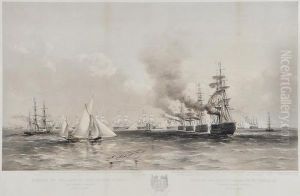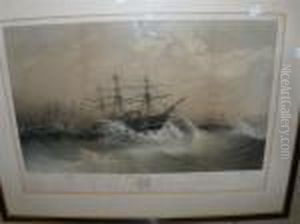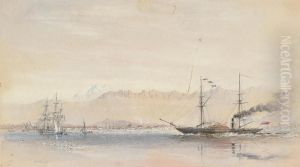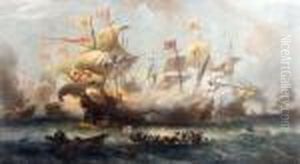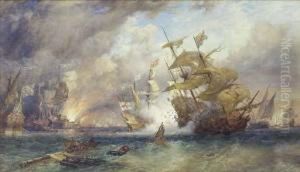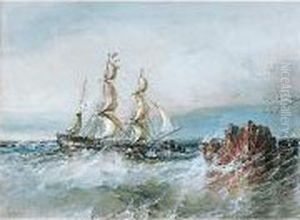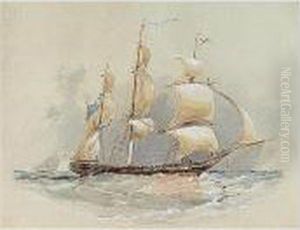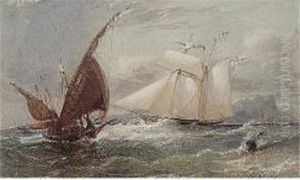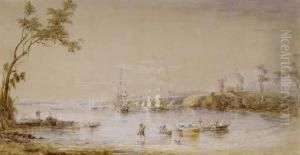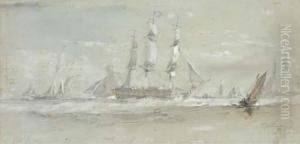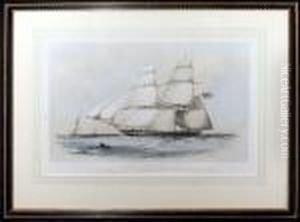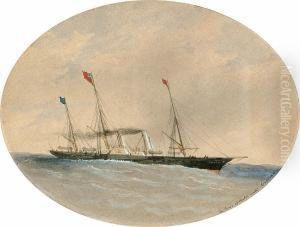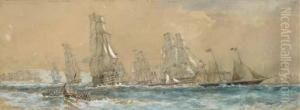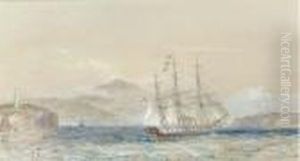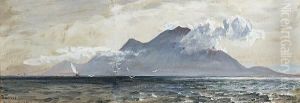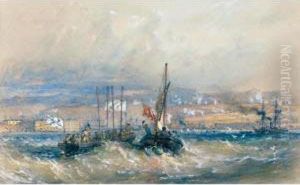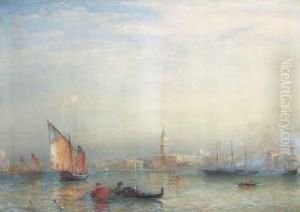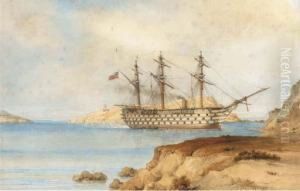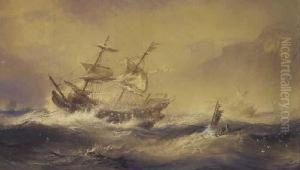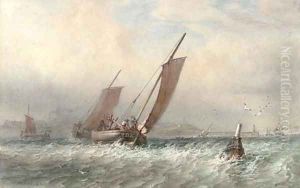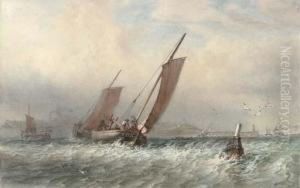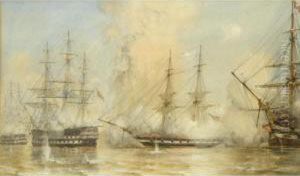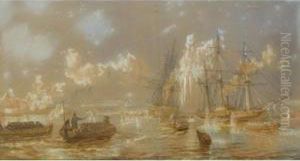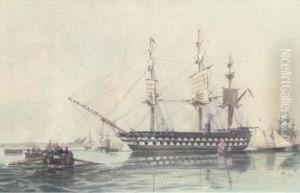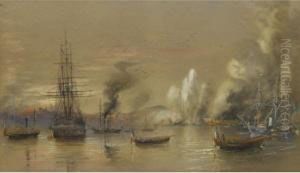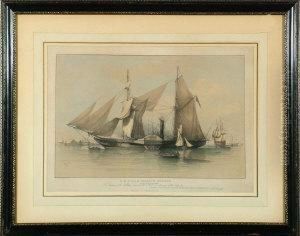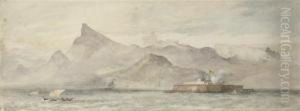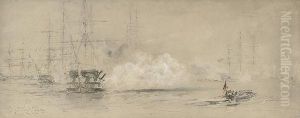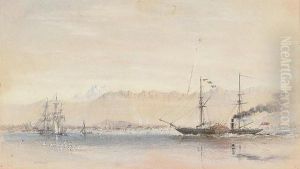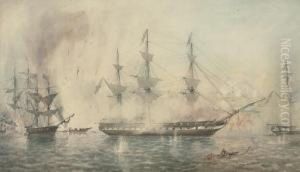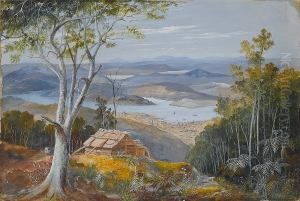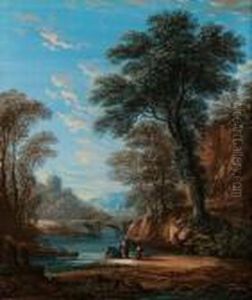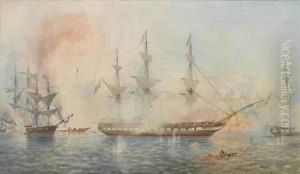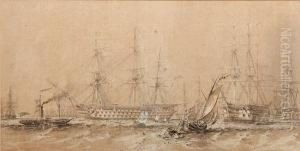Sir Oswald Walter Brierly Paintings
Sir Oswald Walters Brierly was an English marine painter, who became well-known for his watercolors and sketches of sea battles and ship portraits. He was born on May 19, 1817, in Chester, England, and showed an early interest in art, particularly in maritime subjects.
Brierly initially pursued a naval career but soon turned his attentions fully to art. He studied under the marine painter William John Huggins and rapidly gained a reputation for his detailed and accurate depictions of naval scenes. In 1842, he joined the whaling ship Thomas and Lucy on a voyage to Australia, documenting the journey through his art. His experiences at sea provided him with a wealth of inspiration and authenticity for his later works.
While in Australia, Brierly became involved in several expeditions, including one to the Solomon Islands. He also spent time in Sydney, where he cofounded a business to produce panoramic pictures and illustrated Sydney's harbor and surroundings. In 1851, he was appointed marine painter to Queen Victoria, a significant recognition of his talent and skill.
Brierly's works often depicted significant maritime events of his time, including naval battles and royal yachting occasions. His paintings are characterized by their meticulous detail, vibrant color, and lively composition, reflecting both his technical skill and his firsthand experience of life at sea.
In addition to his painting, Brierly was also involved in the design of ships, and he held the position of Honorary Secretary of the Shipwrecked Mariners' Society. His knowledge of ships and his artistic ability combined to make him a respected figure in both the artistic and maritime communities.
Sir Oswald Walters Brierly was knighted in 1885 for his contributions to the arts and to marine illustration. He continued to work until his later years, leaving behind a legacy of influential maritime art. He passed away on December 14, 1894. Brierly's paintings remain important historical records of the age of sail and are held in high esteem by both art historians and maritime enthusiasts.
